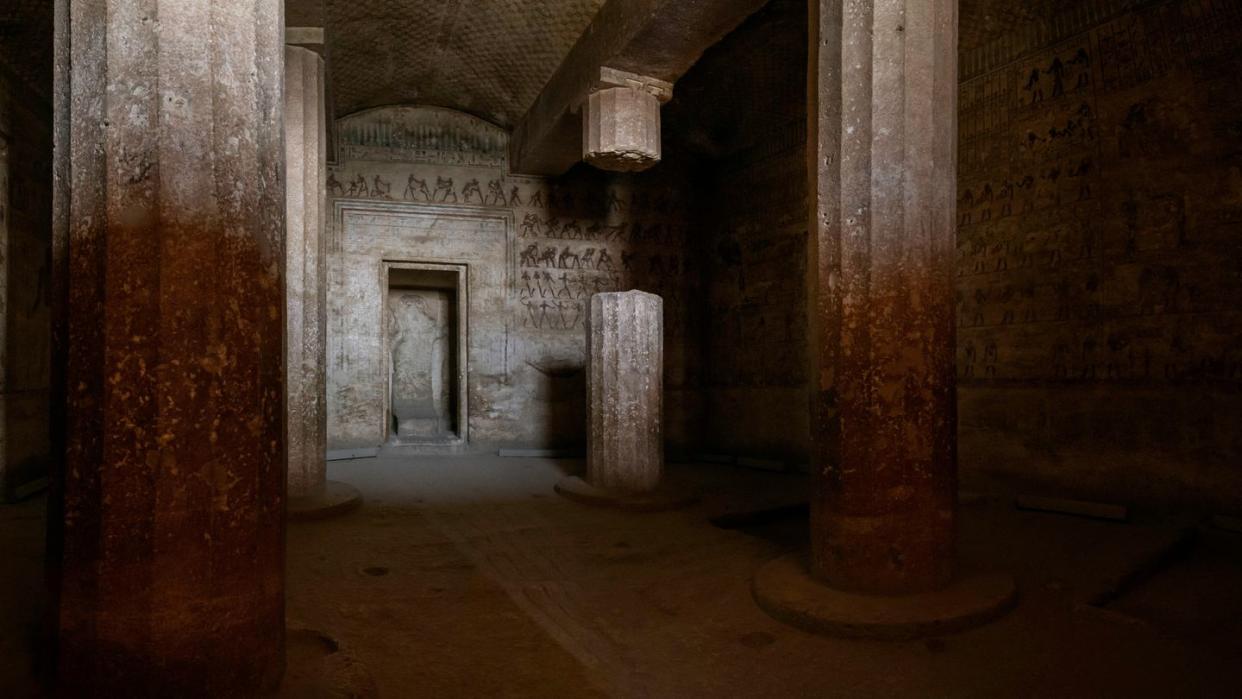Historians Entered an Egyptian Chamber of Serpents. The Curse It Hid Was Chilling.

A 2,500-year-old tomb discovered in Cairo shows that the owner likely feared snakes.
The tomb featured sayings that were meant to ward off snake bites.
Despite the fear, the owner of this tomb also likely wanted snakes to serve as his protectors in the afterlife.
An ancient Egyptian scribe’s snake fascination has carried on for 2,500 years. In a recently located tomb outside of Cairo, archeologists were confronted by the transparent volume of text and scenes focused on snakes within the burial chamber.
Snakes weren’t the only emphasis in the tomb of what we now believe to be Dzehutiemhat, a 20-something-year-old royal scribe who likely died of osteoporosis in ancient Egypt. Two separate sections of the Book of the Dead also appear within the burial chamber.
“While the entrance to the nearby Menechinekan’s burial chamber was protected by the guardians of the gates of the 144th chapter of the Book of the Dead, in the case of Dzehutiemhat, snakes from the Pyramid Texts plays this role,” Renata Landgrafova, director of the Czech Institute of Egyptology, said in a translated statement.
The burial chamber’s south and west walls were covered with a sacrificial ritual and extensive sacrificial listings. The ceiling offered depictions of the Sun’s journey, and the entire burial chamber is “richly decorated with texts and scenes”—including a long sequence of apotropaic sayings covering the entrance wall warding off snakebites.
This section of the Pyramid Texts also features language meant both to represent of the potential danger posed by snakes and to ask snakes to protect the deceased.
“Such a strong emphasis on snake spells was probably the consequence of a personal choice of the tomb owner, as no similar case with such excessive attention to these spells is known,” Miroslav Barta, director of Czech archaeological research in Abusir, tells Live Science.
A large stone sarcophagus, covered in hieroglyphic inscriptions and depictions of gods both inside and out, features the liturgy of the 178th chapter of the Book of the Dead. The University College London says that these three columns of text offer a formula for setting up the corpse. The lid’s sides feature the 42nd chapter of the Book of the Dead—a spell for warding off evil (including snakes, of course).
The decorations on the coffin continue with images of the goddesses Eset and Nebtheta and additional excerpts from both the Coffin Texts and the Pyramid Texts. The excerpts mirror sayings appearing on the walls of the burial chamber.
Barta said in a statement that the discovery of the tomb offers another look into the history of ancient Egypt at the end of its glory in the Late Period. “The shaft tombs represent a special type of tombs of this period,” he said. “They were created as a specific attempt by the ancient Egyptian elites for a renaissance and are based on the image of the tomb of King Djoser, the founder of the famous Old Kingdom, the time of the pyramid buildings in the 3rd millennium BC.”
The transparent extent of the magical texts was meant to give the deceased a smooth entry into the afterlife. Whatever came of Dzehutiemhat following his death, we do know that the tomb was entered by robbers—which wasn’t uncommon—likely in the 5th century AD.
Alas, no actual snakes were found.
You Might Also Like


